From the West Coast to the Space Coast: How to Transport a Massive Satellite across the U.S.A.
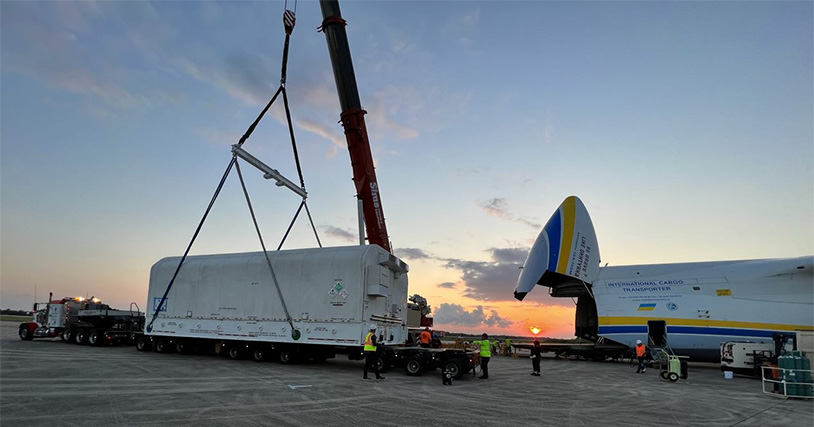
If you are trying to get from one side of the U.S. to the other, there are many modes of transportation one could take – an airplane, a train, a bus, maybe even a leisurely road trip in the car. The choice is entirely yours. But when you are trying to transport a 9 metric ton geostationary satellite from Maxar’s manufacturing facility in Palo Alto, California to the launch site in Cape Canaveral, Florida, your options are limited. There really are only two choices: by truck, which takes about a month and requires complex logistics and a variety of road permits, or by plane. And not just any old commercial airplane, but an AN-124-100, a massive vehicle that specializes in transporting bulky, oversized cargo.
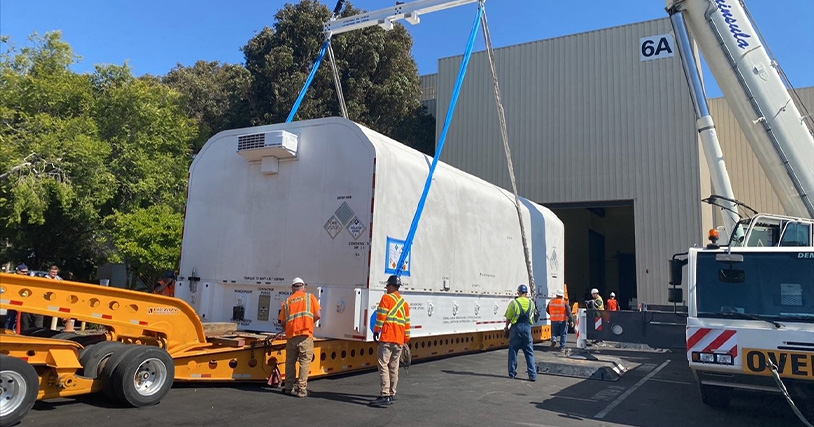
But first, JUPITER™ 3 needs to get to the airport, which is no simple task! The satellite is carefully enclosed in a special temperature-controlled container supported by large dampers to keep it safe during transport – this one was purpose built to handle the size and weight of JUPITER 3.
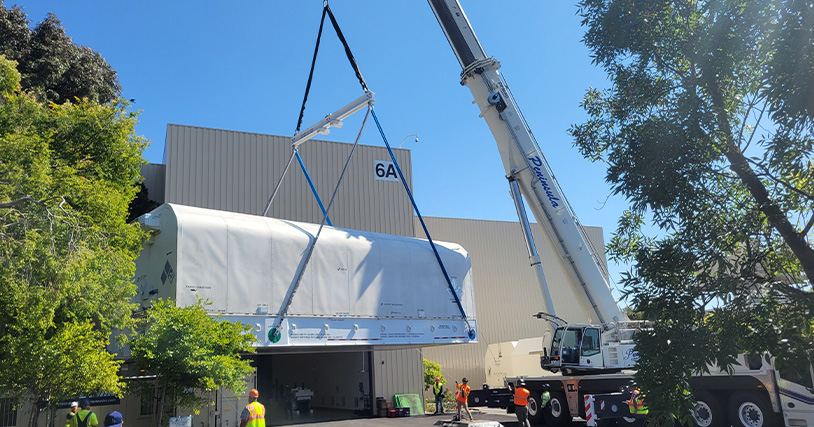
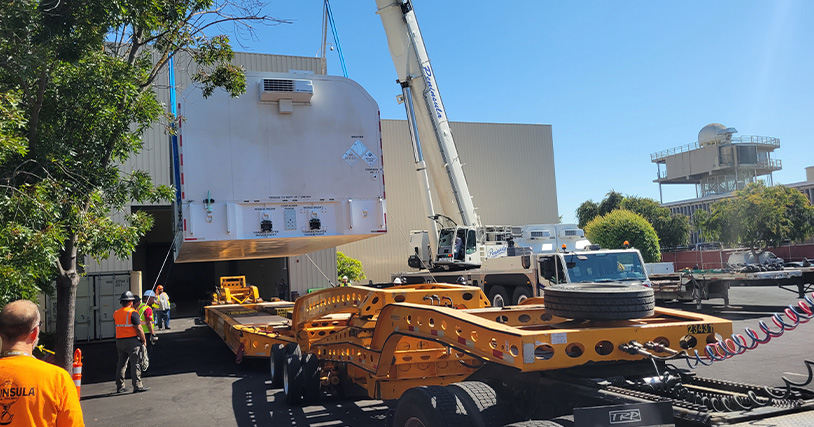

Then, the satellite is hauled by crane aboard a 12-axel flat-bed truck to make the journey across town from the manufacturing facility to Moffett Field – a joint civil-military airport just a few miles away in Mountain View, CA – where it will be loaded onto to the awaiting Antonov plane.
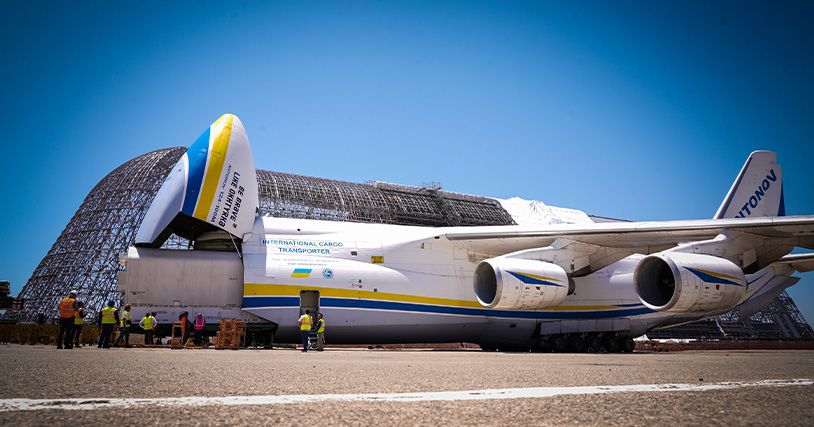
(photo credit: Maxar)
Less than two dozen of the AN-124-100 planes are actively in service across both civilian and military operations around the world. This model of plane is unique because of the distinct hatch that enables the nose of the plane to hinge upward for loading and unloading oversized cargo.
A special ramp was built to convey the container from the truck to the cargo hold of the Antonov. Once the container is safely aboard, the crew dismantles the ramp and loads it into the hold to be used again to unload the satellite container at its destination.
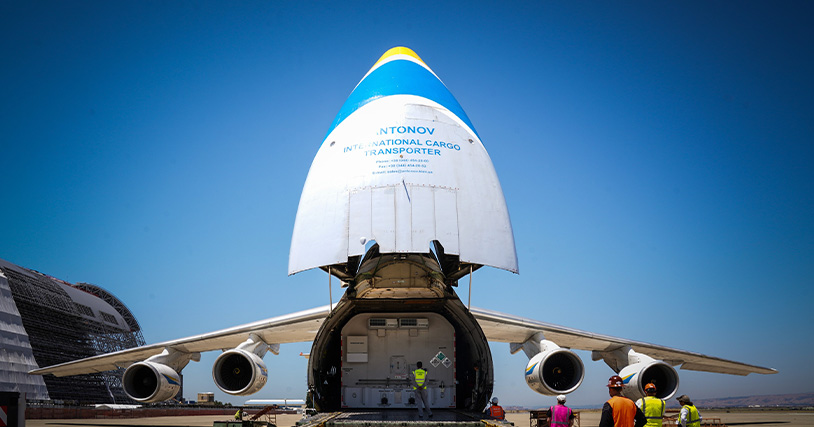
(photo credit: Maxar)
With the satellite (and ramp) securely on board, a crew of about a dozen climbs aboard for the trip. After a brief stop for refueling in Texas, the plane lands in Cape Canaveral, Florida, site of the Kennedy Space Launch Center from which JUPITER 3 will launch.
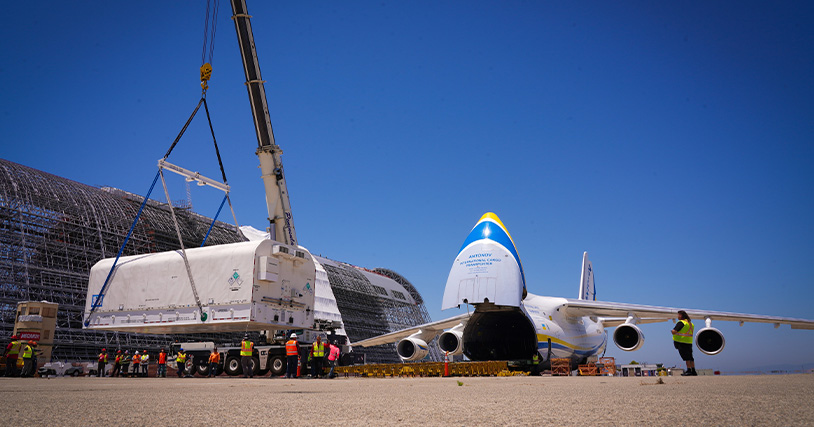
(photo credit: Maxar)
From there, it is trucked to the payload processing facility, where the satellite is moved into an air lock. At that point, JUPITER 3 is removed from the transport container and moved into the actual processing facility for prelaunch preparations.
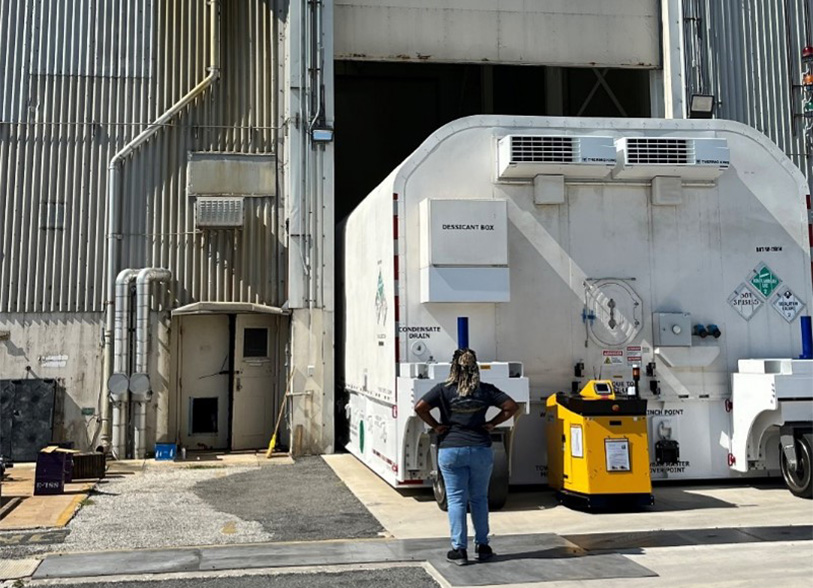
Follow along on our Journey to JUPITER 3 as we track the progress of our next generation ultra-high density satellite.